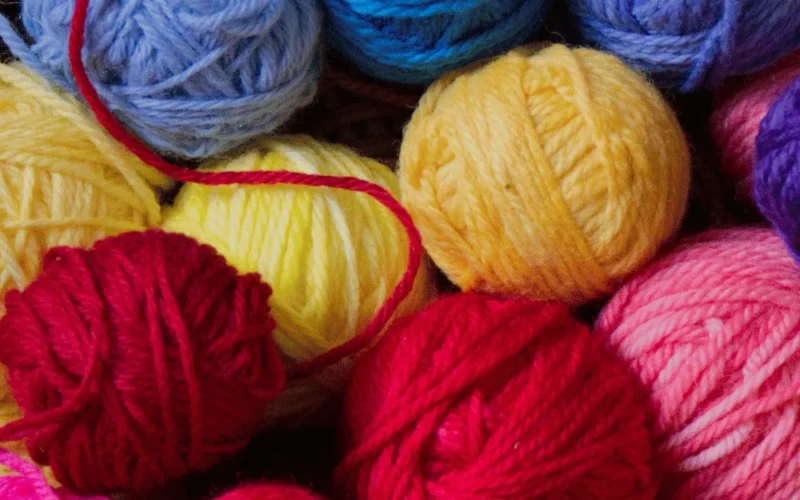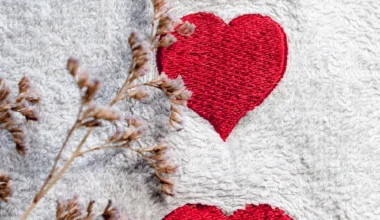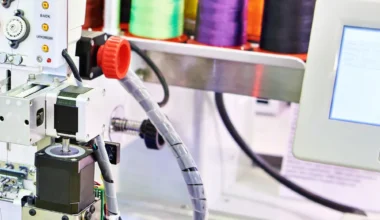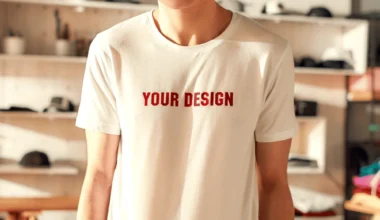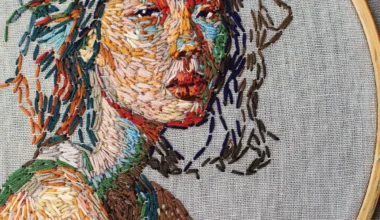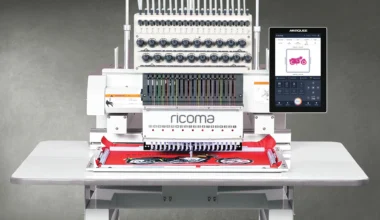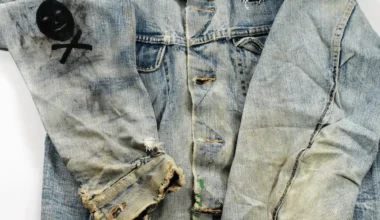Learning how to embroider on knitting can add a beautiful touch to your projects.
You can embellish a cozy sweater, or learn how to embroider on knit hats – knowing how to knit (especially on different fabrics) can help you up your embroidery game.
Before you start stitching away, there are a few important things to keep in mind to ensure your embroidery looks its best and lasts for years.
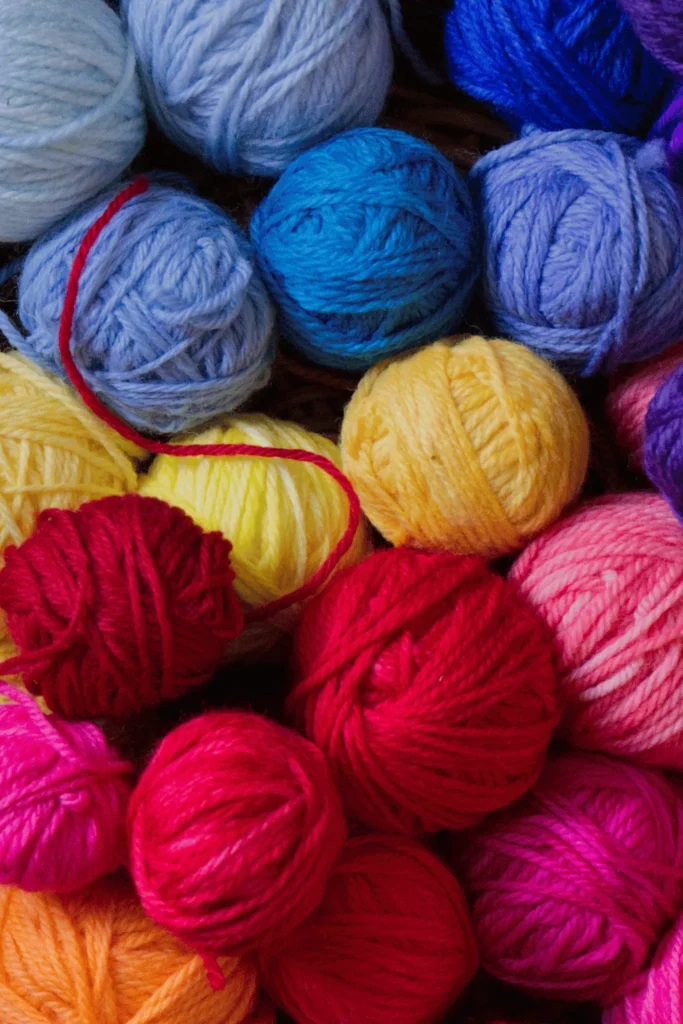
Quick Things to Note About Embroidering
- Different knitting stitches and types of knit fabrics can affect the ease of embroidering. Ultimately, learning how to embroider on knitting requires a bit of understanding about the fabric you’re working with.
Tighter stitches might require more effort to embroider through, while looser stitches could be more forgiving. - It’s important to choose the right embroidery thread. Opt for a thread that complements your knitting yarn in weight, color, and texture. This harmony ensures your embroidery blends seamlessly with your knitting.
- Use stabilizers to keep your embroidered design looking crisp and neat. They prevent the knitting fabric from stretching or distorting during embroidery, providing essential support and structure. From wash-away stabilizers to cut-away, just make sure to choose which one is best for your design and easiest for you to use!
- Before diving into your main project, it’s wise to test your embroidery design on a small swatch of knitting fabric. This allows you to gauge compatibility and make any necessary adjustments without risking the integrity of your final piece.
Things You’ll Need for Embroidering (By Hand or By Machine)
Now that you’re armed with some quick knowledge on how to embroider on knit fabric, let’s gather the tools you’ll need to bring your creative visions to life, whether you prefer hand stitching or machine magic.
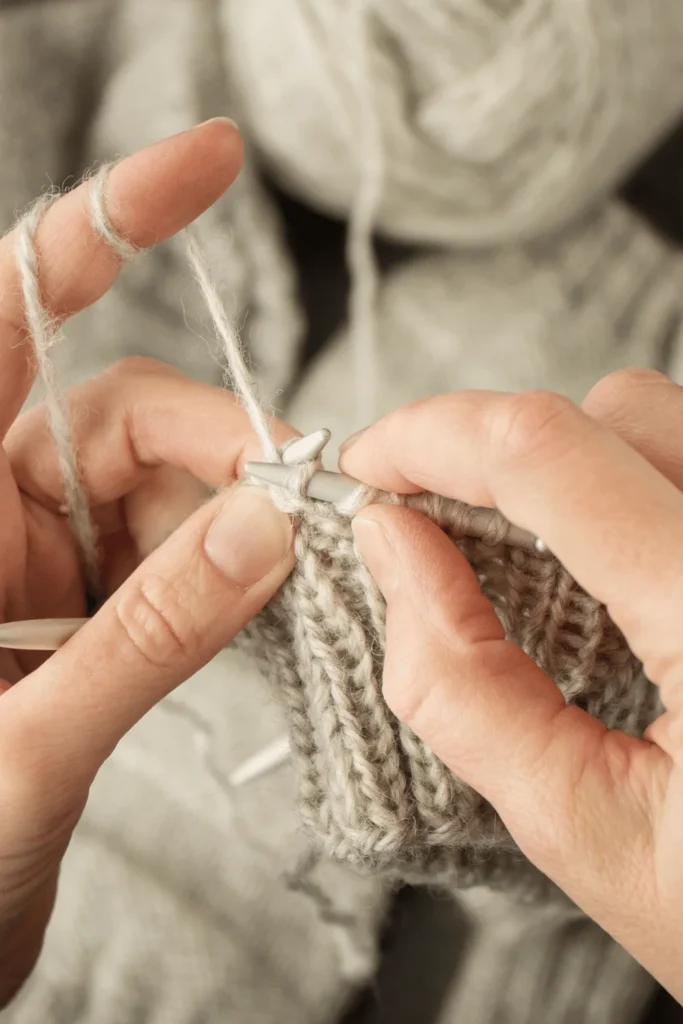
For hand embroidery, you’ll need…
- Embroidery hoop to keep your fabric taut and flat
- Embroidery thread
- Needles suitable for knitting fabric (such as tapestry needles)
- A good pair of scissors for cutting thread and trimming excess fabric.
If you’re venturing into machine embroidery, you’ll need…
- A good embroidery machine. Compare embroidery machines, as there are quite a few on the market. Make sure it’s equipped with the right features and capabilities for your projects.
- A solid digitizing software to bring your designs to life. Our Chroma Digitizing Software comes with your Ricoma embroidering machine with no installation dongle required!
- A stabilizer on hand to prevent puckering and distortion, especially on stretchy knit fabrics.
How to Embroider on Knitting
Let’s delve into the essential steps for how to embroider on knitting with finesse.
Choose the Right Knit Fabric
When picking out knit fabric for embroidery, opt for smooth, tightly knit fabrics for intricate designs. These fabrics provide a stable base for your stitches and allow your embroidery to stand out beautifully.
Consider the weight and stretchiness of the knit. Thicker, less stretchy knits are easier to embroider on, especially for beginners. However, if you’re working with a stretchy knit, take extra care to stabilize the fabric to prevent distortion.
You’ll also want to choose a color that complements your embroidery thread. The goal is to create harmony between the knit fabric and the embroidery, so select a fabric color that enhances the colors in your design.
Pre-wash and block your knitting before embroidering.
This step helps to remove any sizing or dirt from the fabric and ensures that the knit maintains its shape during the embroidery process. Blocking also allows you to accurately assess the size and shape of your knitting, making it easier to plan your embroidery design.
Prepare Your Knitting for Embroidery
Before you start stitching, take the time to prepare your knitting for embroidery to ensure the best results.
Mark your design placement with removable fabric markers. This helps you visualize where your embroidery will go and ensures that your design is centered and balanced.
Next, secure your knitting in an embroidery hoop or frame to keep the fabric taut and flat while you stitch. This makes it easier to work with and produces cleaner, more even stitches.
This is where using your embroidery stabilizer or backing comes into play. This adds stability to the fabric, making it easier to embroider on and reducing the risk of distortion.
For delicate knits, consider using a water-soluble stabilizer. Like its name suggests, this type of stabilizer dissolves in water, leaving behind only your beautifully embroidered design and eliminating the need for trimming excess stabilizer.
Use Embroidery Techniques (Or Use Your Embroidery Machine)
Whether you prefer the meditative rhythm of hand stitching or the efficiency of a machine, there are techniques suited to your embroidery style.
Let’s explore how to embroider on knitting using both methods.
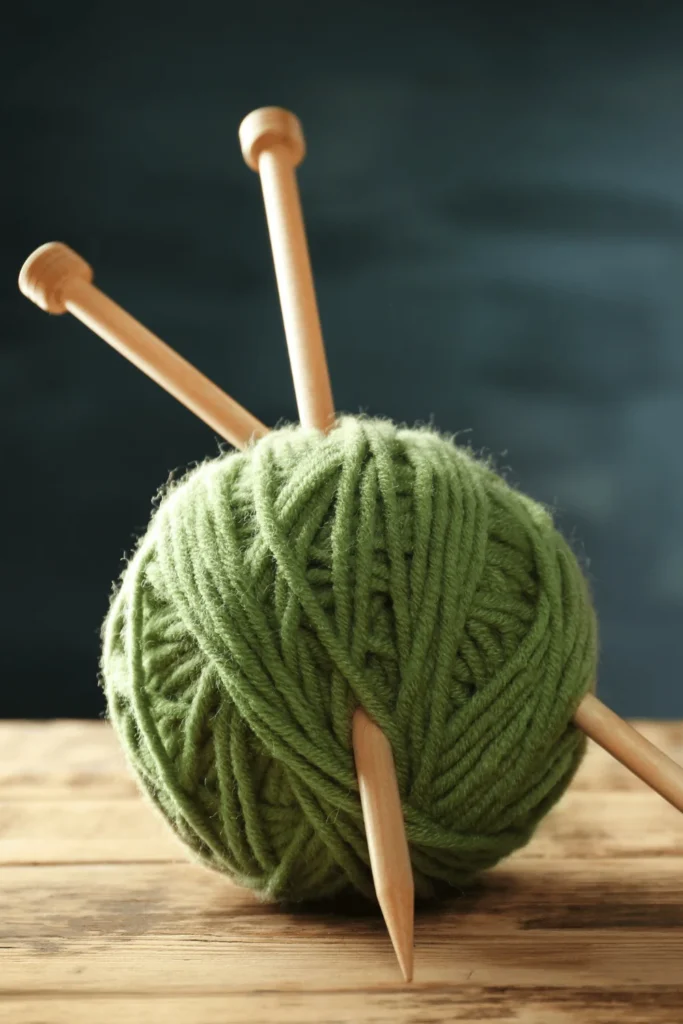
Hand-Embroidering
Hand embroidery allows for intricate detailing and a personal touch to your knitting projects. Here’s how to master it:
- Use embroidery stitches like satin stitch, backstitch, or chain stitch to create texture and dimension in your designs.
- Experiment with different thread weights and textures to achieve the desired effect. Thicker threads can add depth, while finer threads create delicate details.
- Work from the center of your design outwards for even coverage and to maintain symmetry.
- Keep your stitches consistent in length and tension for a polished, professional finish.
Machine Embroidering
Machine embroidery offers speed and precision, perfect for larger projects or intricate designs:
- Hoop your knitting fabric and stabilizer together, ensuring they’re taut and secure to prevent shifting during embroidery.
- Select the appropriate embroidery designs and thread colors that complement your knitting fabric and project theme.
- Adjust tension and stitch settings on your embroidery machine according to the thickness and stretchiness of your fabric. Test on a scrap piece of fabric before starting your main project.
- Monitor the embroidery process closely to prevent fabric puckering or misalignment. Adjust the tension or speed as needed to ensure smooth, flawless stitching.
Whether you choose hand embroidery or machine embroidery, these techniques will help you achieve stunning results on your knitted creations.
Finishing and Caring For Your Embroidered Knit Items
After completing your embroidery, remove any remaining stabilizer using water or tear-away methods. This will prevent any residue from affecting the fabric’s appearance or texture.
Once the stabilizer is removed, block your finished embroidery to shape and size. This step helps maintain the intended dimensions of your embroidery and ensures a polished, professional look.
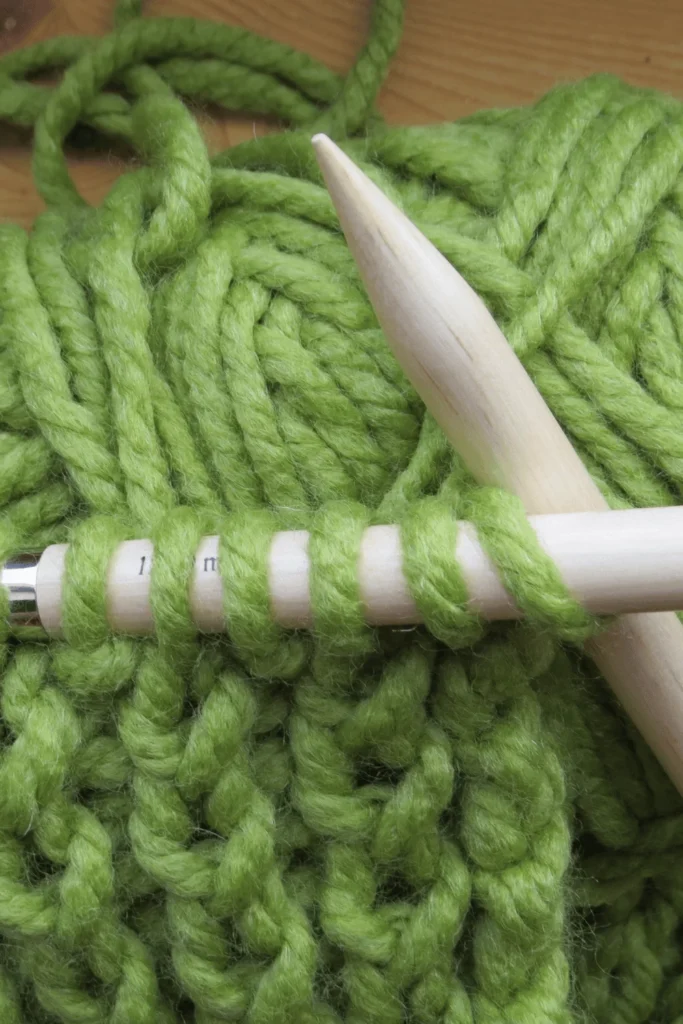
Then, gently hand-wash your embroidered knit items in cool water with mild detergent. This helps clean off anything remaining while avoiding damaging the delicate fabrics.
After washing, air dry your embroidered knit items flat to maintain the shape and integrity of the embroidery. Don’t wring out your knitted items, as this can distort the fabric and cause the embroidery to stretch or warp!
Make Embroidering a Breeze with the Ricoma Marquee
Embroidery is made easy for all skill levels with the Ricoma Marquee embroidery machine.Whether you’re a seasoned embroiderer or just starting out, this 20-needle machine comes with an LCD screen, large memory capacity, and a smaller sewing arm. Get pro results every time with the Marquee!
